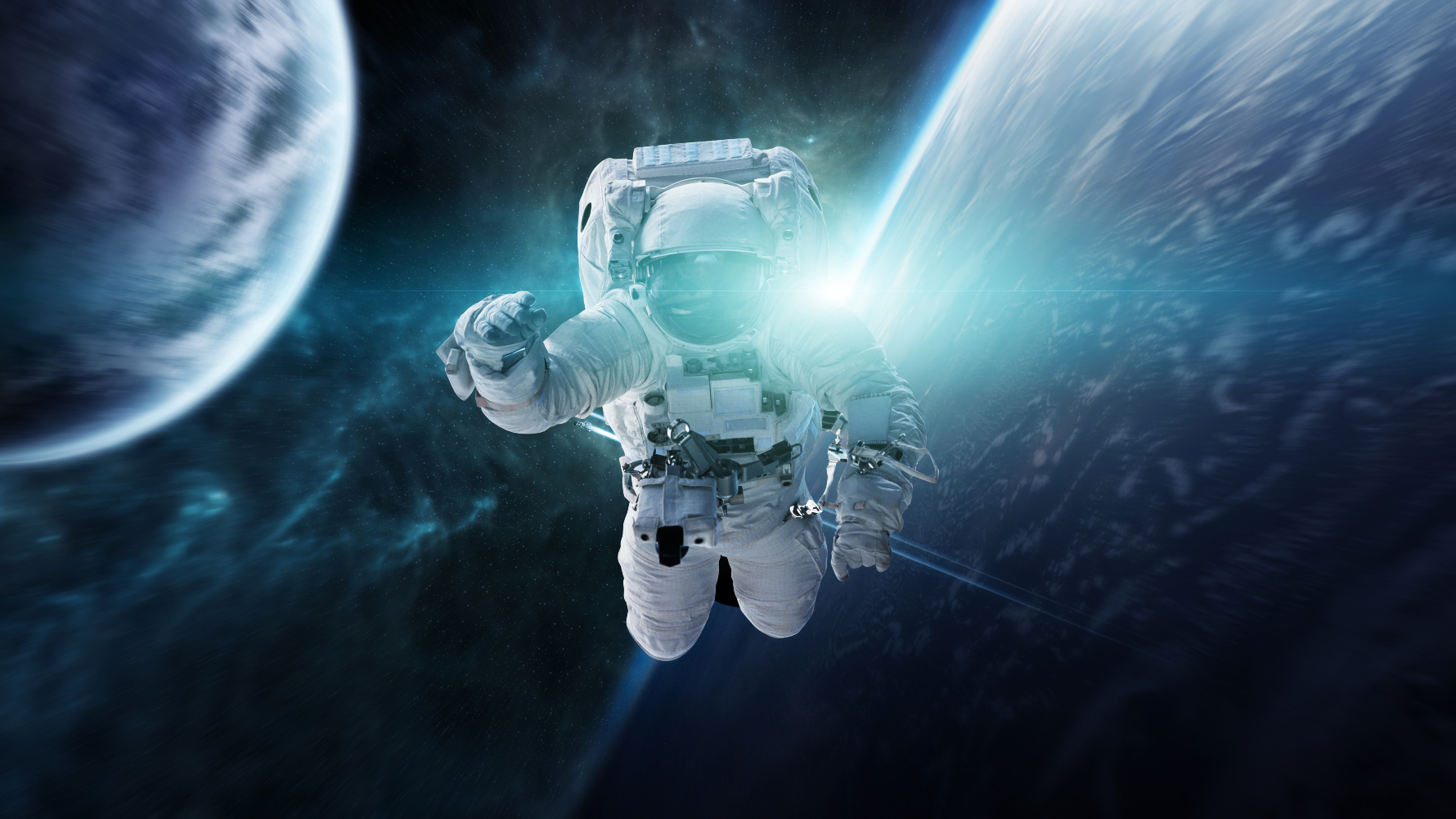

Astronauts aboard the International Space Station (ISS) have long used the seeming weightlessness of space to have a bit of fun — chasing their dinner through the air, playing tug-of-war and mimicking superheroes. But is there a traditional "up" and "down" in space? Based on the astronauts' experiences, it's easy to think that the usual designations we use to define our positions, such as up and down or North and South, no longer apply once we leave Earth.
That's true in some ways, but it's still possible to use human perceptions of space and time to orient ourselves among the stars.
Just as on Earth, astronauts aboard the ISS experience gravity, one of the four fundamental forces in the universe. According to Sanjana Curtis, a nuclear astrophysicist at the University of Chicago, the prevailing thinking among physicists is that "down" is simply the direction in which gravity is pulling you, and "up" is the opposite direction. The astronauts' weightlessness stems from the fact that the ISS and the people inside it are free-falling toward the center of the Earth, drawn "down" by the planet's gravitational force. The station remains aloft because the velocity of the station and the resulting centrifugal force it generates push it "up," or away from Earth, at a speed roughly equal to gravity's pull. This balance is called a stable orbit.
"That's one of the most exciting things about physics, that we have a framework to describe and make sense of things that are unintuitive or that we are unable to perceive," Curtis told Live Science. "Up and down may be vague terms, but in physics, you can always come up with a definition that works."
Related: What happens in intergalactic space?
Albert Einstein described gravity as a warping of the fabric of space-time, and to illustrate this theory, scientists often use the simplified analogy of a bedsheet held taut. If you place a bowling ball onto the sheet, its mass causes the sheet to dimple downward at its center. If you then add a marble, it will roll toward the bottom of that dimple, drawn in by gravity.
Every object that has mass curves the space-time continuum. As such, it's unlikely that there's any place in the universe that isn't subject to gravity, Jessica Esquivel, a particle physicist at Fermilab in Illinois, told Live Science. If you plop another marble onto the map — even on the outskirts— it will be pulled from many directions. "Anywhere in space, you're going to feel that warping of the sheet, and that's gravity that's causing that," she said.
Generally speaking, the more massive an object, the deeper the warp and the stronger the pull, but your proximity also matters. For this reason, the planet you're standing on — whether Earth or Mars — will always exert the strongest gravitational force on you. At the same time, the planets in our solar system are being drawn toward the center of the sun. Even farther out, the massive black hole at the center of our galaxy is tugging the entire solar system closer. Outside the galaxy, the greatest pull is toward the nearest cluster of galaxies.
"You can zoom out and out and out and see the different depths of that space-time fabric," Esquivel said.
While gravity is a fundamental force, there remains much we don't understand about it. Scientists don't include gravity in the Standard Model of particle physics, for example, because the leading theory of gravity — Einstein’s general theory of relativity — has thus far proven incompatible with the Standard Model . While designations such as "up" or "down" help us make sense of the universe, Esquivel said they can also sometimes hinder our understanding of fundamental physics.
"One of the hardest things about my job is trying to think outside of those binaries, to imagine a space where there's no up or down or forward or backward or past or present," she said. "There's this beautiful fluidity that we have to engage with, and it's really difficult but also one of the funnest parts of the job."







